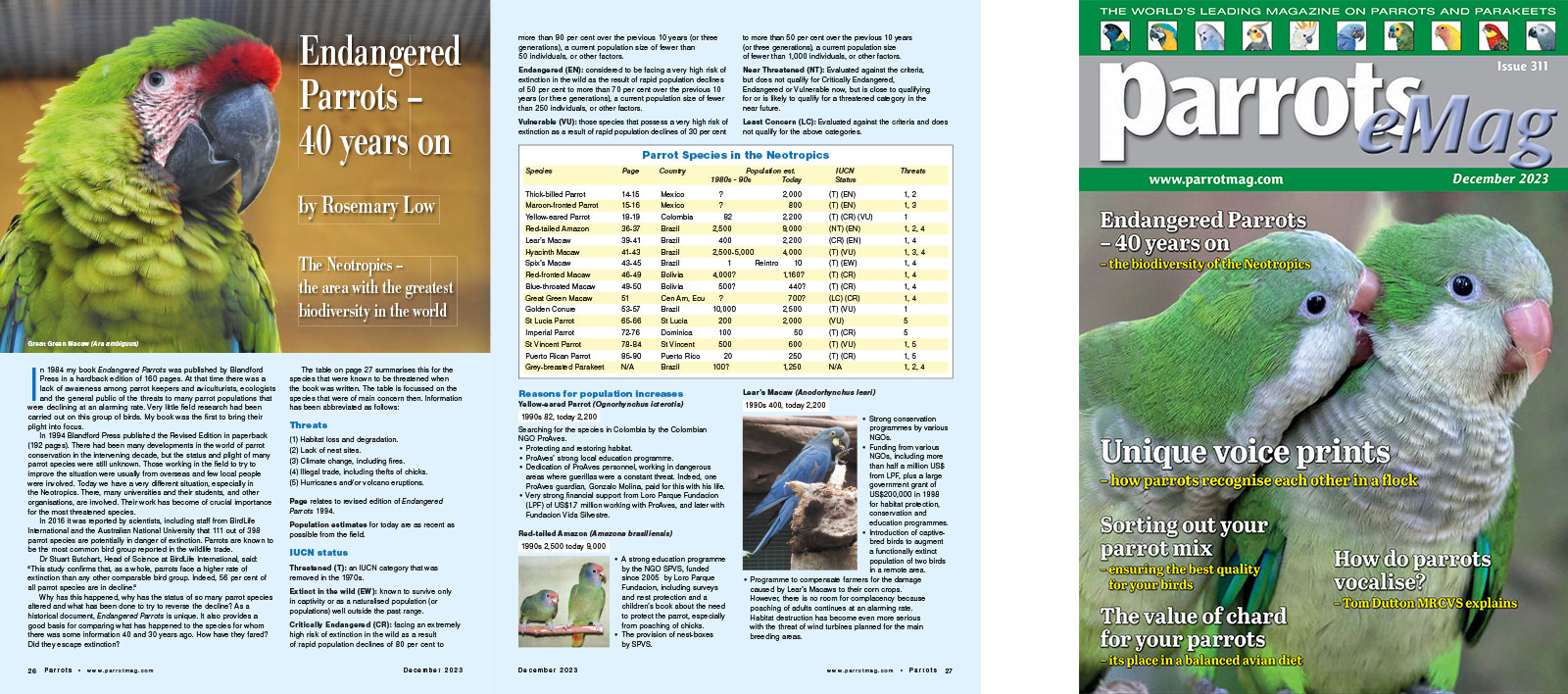
By Rosemary Low
In 1984 my book Endangered Parrots was published by Blandford Press in a hardback edition of 160 pages. At that time there was a lack of awareness among parrot keepers and aviculturists, ecologists and the general public of the threats to many parrot populations that were declining at an alarming rate. Very little field research had been carried out on this group of birds. My book was the first to bring their plight into focus.
In 1994 Blandford Press published the Revised Edition in paperback (192 pages). There had been many developments in the world of parrot conservation in the intervening decade, but the status and plight of many parrot species were still unknown. Those working in the field to try to improve the situation were usually from overseas and few local people were involved. Today we have a very different situation, especially in the Neotropics. There, many universities and their students, and other organisations, are involved. Their work has become of crucial importance for the most threatened species.
In 2016 it was reported by scientists, including staff from BirdLife International and the Australian National University that 111 out of 398 parrot species are potentially in danger of extinction. Parrots are known to be the most common bird group reported in the wildlife trade. Dr Stuart Butchart, Head of Science at BirdLife International, said: “This study confirms that, as a whole, parrots face a higher rate of extinction than any other comparable bird group. Indeed, 56 per cent of all parrot species are in decline."
